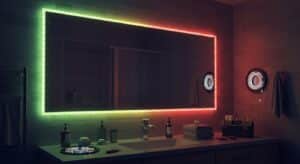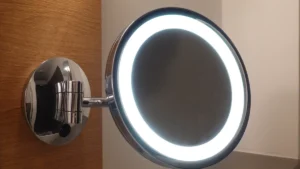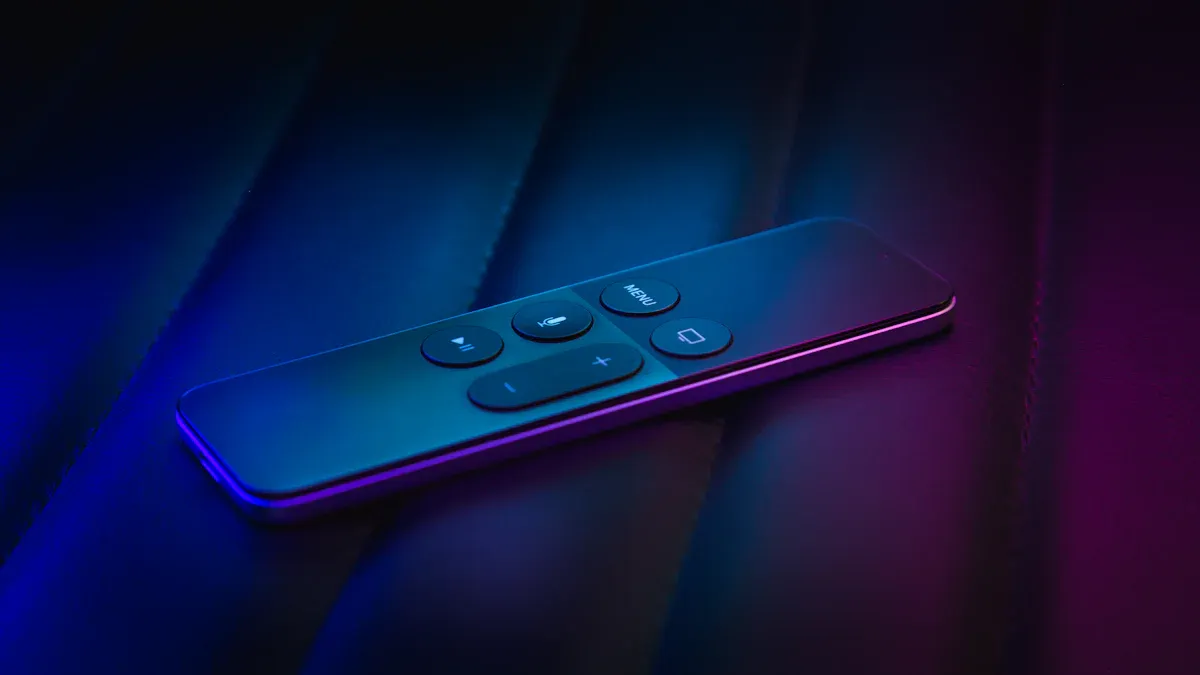
Choosing the right LED strip light control systems can transform the way you illuminate your home. The ideal control system allows you to adjust brightness, set timers, and create impressive lighting effects. These systems also contribute to energy savings by dimming lights and utilizing automation. By connecting LED strip light control systems to smart home networks, managing your lighting becomes as simple as speaking a command.
Fun fact! Advanced LED strip light control systems enable you to manage lights and other smart devices from a single interface, making your home smarter and easier to oversee.
If you’re looking to enhance your home’s appearance or reduce energy consumption, selecting a quality LED strip light control system is essential. It ensures your lights integrate seamlessly with your fixtures and smart home setup.
Key Takeaways
Pick an LED strip controller that fits your strip type. RGB strips need RGB controllers, and single-color strips need basic ones.
Check for smart features like Wi-Fi to control lights. You can use voice commands or apps for easy use.
Think about energy savings and how long it will last. Good controllers may cost more but save money later.
Understanding LED Strip Light Control Systems
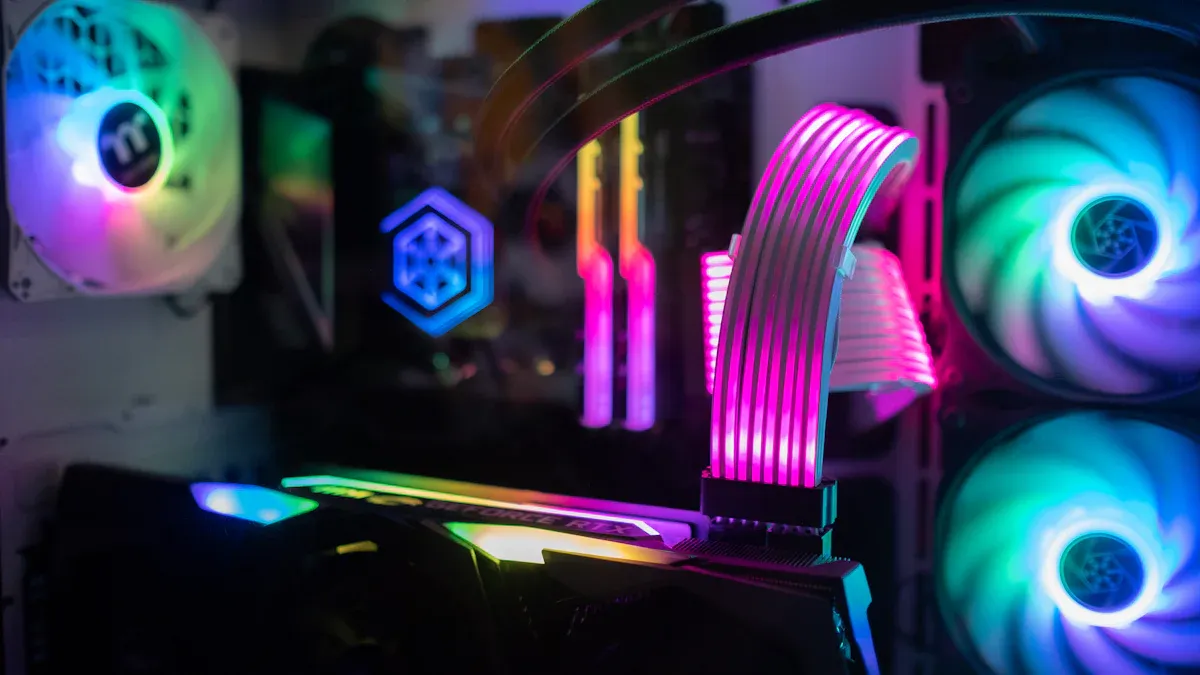
What Are LED Strip Controllers?
A LED strip controller is like the brain of your light system. It helps you control brightness, colors, timing, and effects. Think of it as a remote for your lights. You can dim lights for relaxing or make colorful displays for parties. The controller makes all this possible.
Modern controllers do more than basic tasks. They can schedule lights, adjust with sensors, and even work with voice commands. These features make your lights energy-saving, useful, and long-lasting.
Types of LED Strip Light Controllers
There are different types of controllers for various needs. Here’s a simple guide:
Infrared (IR) Controllers: These are cheap and easy to use. They need a direct line of sight to work.
Radio Frequency (RF) Controllers: These are more flexible. You can control lights from another room without direct sight.
Wi-Fi and Bluetooth Controllers: Great for smart homes, they connect to apps or voice systems.
DMX Controllers: Best for professional setups like stage shows. They give precise control over complex lights.
Key Features of LED Strip Controllers
When picking a LED strip controller, look for features that make it better and easier to use. Here’s what to check:
Feature | Description |
|---|---|
Power Management | Stops overloads and helps your lights last longer. |
Processor Efficiency | Makes light changes faster and more accurate. |
Firmware Optimization | Keeps your system working with different setups. |
Automated Controls | Changes brightness or color using schedules or sensors. |
DMX512 Connectivity | Gives advanced control for stage or commercial lighting. |
Good LED light strips last for thousands of hours. They stay cool, protecting the parts from damage. This means your lights will work well for a long time.
Key Factors for Picking the Best LED Strip Controller
Matching with LED Strip Lights
Start by making sure the controller works with your LED strips. Not all controllers fit every strip type. For instance, RGB strips need RGB controllers, while single-color strips need simpler ones. Use this chart to match your strip type with the right controller:
LED Strip Type | Controller Needed |
|---|---|
RGB | RGB controller |
RGBW | RGBW controller |
RGB+CCT | RGB+CCT controller |
Single Color | Single color controller |
Addressable | Addressable controller |
Non-addressable | Non-addressable controller |
Check the voltage too. DC12V strips need DC12V controllers, and DC24V strips need DC24V controllers. For outdoor use, pick waterproof controllers. Choosing the right controller avoids problems and keeps your lights working well.
Smart Home Connection Choices
For smart homes, pick controllers that work with smart systems. Many controllers now have Wi-Fi or Zigbee chips. These let you connect to smart home setups. You can control lights with voice commands or apps. Imagine saying, “Turn off the lights,” and it happens instantly. It’s super easy!
Some controllers also work with Alexa, Google Assistant, or Apple HomeKit. This makes controlling your LED lights simple and smooth.
Features for Control and Customization
Good controllers let you adjust and personalize your lighting. Here are some common features:
Feature | What It Does |
|---|---|
Dimming | Change brightness from very low to very bright. |
Color Mixing | Make custom colors and effects with RGB lights. |
Timers and Scheduling | Set lights to turn on or off at certain times. |
Smart Control | Use apps or voice commands for wireless control. |
Energy Efficiency | Save power with dimming and automation. |
These features help you manage multiple LED strips easily. You can create the perfect lighting for any mood or event.
Cost and Budget Tips
Think about cost and features when picking a controller. First, decide what you need. Do you want basic controls or advanced options like smart features? Here’s a quick guide to benefits:
Benefit | Why It’s Useful |
|---|---|
Energy Efficiency | Lower electricity bills with better control. |
Maintenance Savings | Strong systems last longer, saving on replacements. |
Scalability | Add more lights without changing your setup. |
High-quality controllers might cost more at first. But they save money over time with energy efficiency and durability. Compare brands and features to get the best deal for your budget.
Practical Steps for Selecting and Installing LED Strip Controllers
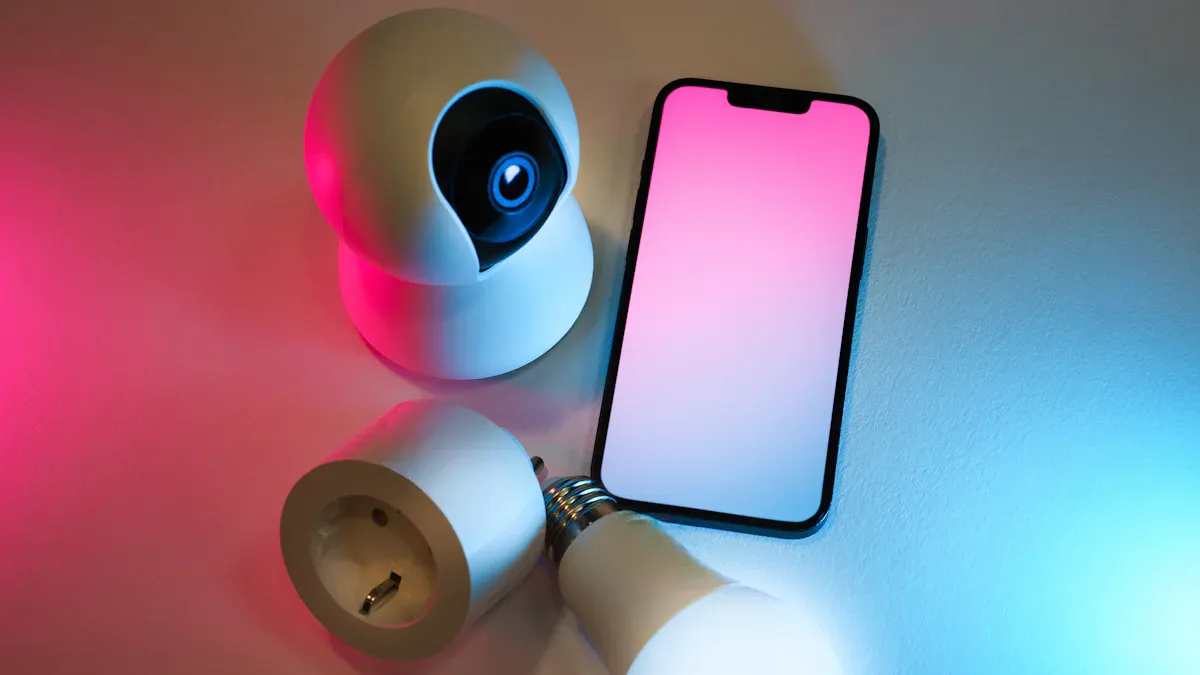
Matching Controllers to LED Strip Light Types
Picking the right controller is important for your LED lights. Controllers work with specific LED types like single-color, RGB, or RGBW strips. For example, RGB strips need an RGB controller, while single-color strips use simpler ones. Choosing the correct controller ensures your lights work properly.
Voltage matters too. DC12V strips need DC12V controllers, and DC24V strips need DC24V controllers. Using the wrong voltage can harm your system. For outdoor setups, pick waterproof controllers to protect against rain. The right controller helps your lights last longer and work better.
Evaluating Application and Environment
Think about where and how you’ll use your LED lights. Are they for a cozy room or an outdoor patio? Indoors, focus on looks and easy controls. Outdoors, choose durable and weatherproof options. Also, decide if you want wireless control with apps or voice commands.
Plan your setup by checking the layout and power needs. Add up the power your LED strips use and match it to the power supply. This prevents overloads and keeps your system safe.
Installation Tips for LED Strip Light Control Systems
Setting up LED strips and controllers can be simple. Follow these steps for an easy installation:
Clean the Surface: Wipe the area where strips will go. This helps them stick well.
Measure and Cut: Cut the strips to the right length. Use connectors to join pieces.
Attach Power Supply: Match the power supply to your strips and controller. Check voltage and polarity carefully.
Test the System: Turn it on to check brightness and function. Fix problems before securing strips.
Stick the Strips: Place the strips neatly and add extra support if needed.
Pro Tip: Turn off power during setup to stay safe. Clean gently and check often to keep your lights working longer.
By following these steps, you’ll set up LED lights easily and enjoy a great lighting system.
Picking the right LED controller changes how your lights work. It’s more than just adjusting brightness or colors. A good controller helps you set schedules and moods easily. Smart options, like Wi-Fi, make control simple. Look at choices carefully and choose what suits you best.
FAQ
How can I tell if a controller works with my LED strips?
Look at your LED strip type, like RGB or RGBW. Check the voltage too. Match these details with the controller’s specs to make sure they fit.
Is it possible to control many LED strips using one controller?
Yes, you can! Just check the controller’s power output. It should handle the total wattage of all strips. For longer setups, use amplifiers to help.
Should I hire a professional to install LED strip controllers?
Not always! Most setups are easy to do yourself. Follow the guide, match the voltage, and test everything. For tricky setups, ask an expert for help.
Tip: Always check your power supply and connections twice before turning it on. This helps avoid damage.

